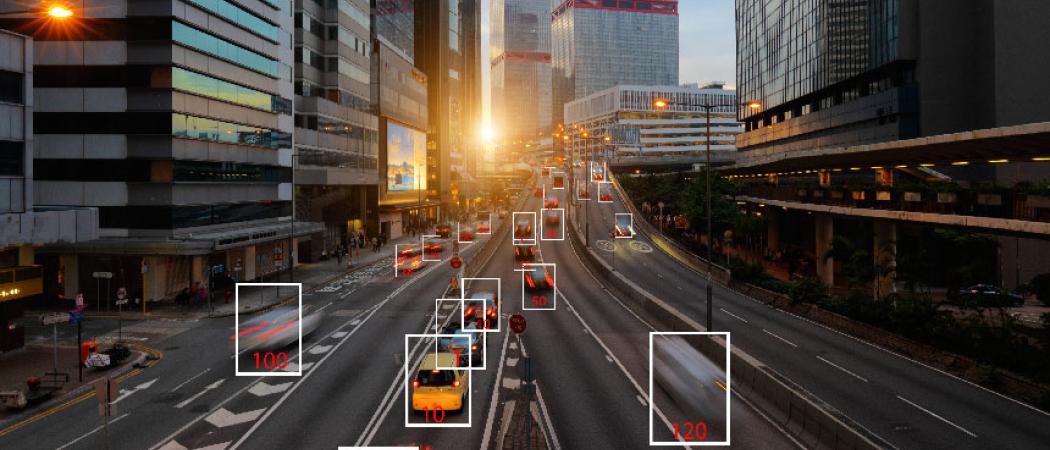EU-funded ATTRACT consortium is supporting ambitious early-stage communications technologies

Imagine a radar app on your smartphone that could quickly generate a dynamic map of whatever building you find yourself in, and show you where you are and how people are moving around you.
That’s what researchers at the University of Bologna and the French Alternative Energies and Atomic Energy Commission (CEA) are developing. The dawn of 6G – the next generation of cellular technologies - could make it a reality in the next decade, according to Davide Dadari, associate professor of electrical engineering at Bologna.
The project is just one of seven pioneering communications technologies supported by ATTRACT, a €20 million EU-funded consortium coordinated by CERN that helps early-stage proof-of-concept tech projects. ATTRACT has given grants of €100,000 to over 170 sensing and imaging projects in more than 30 categories, of which communications technology is but one.
Personal radar is one of the possible outcomes. The idea is that indoor maps hosted in the cloud would be constantly updated as personal radar users scan their surroundings, enabling people to see immediately which shops are crowded, for example.
“Outdoors, you have Google Maps,” said Dadari, principal investigator of Personal Radars for Radio Imaging and Infrastructure-less Localisation, or PRIMELOC. “The challenge is to achieve what we are currently doing today with the outdoor scenario,” he said.
PRIMELOC is working with experimental technology to demonstrate what might be possible in the future, if mobile phones’ antennas become so small that hundreds can be packed into a single device. Mobile operators are now rolling out 5G infrastructure, which will deliver faster mobile internet than the 4G services in use today. But Dadari says we’ll likely have to wait until the 6G era — which is whatever comes next — before smartphones carry antennas sophisticated enough to be used for radar.
Lighting that can detect falls
In a similar vein, ATTRACT is also funding VLADIMIR (visible light communication for indoor monitoring), a project that’s exploring safety applications for visible light communication (VLC). VLC is a method of transmitting information through room lighting by using LED bulbs that pulse at a rate humans don’t notice—making it a possible substitute for WiFI, among other things. But VLADMIR is looking at how the technology could be used to detect when someone falls over without the need for intrusive cameras, by measuring shifts in reflected light as people and objects move around the room.
“If a person stands between the LED and the photodetector, he will create a shadow,” said principal investigator Alexis Dowhuszko, “this shadow will have a specific kind of signature that will depend on the object that is creating that shadow.” The goal is to develop a system sophisticated enough to identify objects and their movements, said Dowhuszko, a senior researcher at the Centre Tecnològic de Telecomunicacions de Catalunya (CTTC), which is running VLADIMIR in partnership with Aalto University in Finland.
Cars that can see through fog
Another ATTRACT-supported project aims to develop a radar that can help self-driving cars “see” in dense fog. Self-driving cars detect objects using cameras and image recognition software, which—like human vision—are impaired when visibility is poor. That’s not a problem for radar, but precisely tracking the direction of fast-moving objects with radar currently requires expensive, military-grade antennas that aren’t suitable for a civilian car.
That’s why the SINATRA project is designing advanced direction-tracking antennas that can be cheaply integrated into printed circuit boards (PCBs). SINATRA is a joint effort between the University of Siena and ECM, an Italian company that makes electrical equipment for railways, and the project is also looking at ways to use the technology to detect people and obstacles on level crossings.
Antennas can be miniaturised in this way because modern electronics permit higher frequencies, which mean shorter wavelengths and smaller antennas. It also means shorter range, but that’s not really a problem for these two use cases.
However, what is a problem is that the PCB antennas in today’s cars are not very good at tracking direction. “They cannot give this angular resolution,” explained Matteo Albani, associate professor of electromagnetic engineering at Siena, “[it’s] like looking through clouded glass.” The only current alternatives are metal poles that are “usually bulky, heavy and expensive, but very well-performing,” Albani said.
Making computer memory more robust
The ATTRACT programme also supports ULTRARAM, which is an effort to develop a new kind of random-access memory (RAM) for use in the Internet of Things (IoT), where various objects are fitted with connected sensors and devices. RAM is fast, temporary memory that computers use to store only what they need immediately. When the power is cut, the RAM gets wiped, which makes it “volatile” memory.
But many IoT outdoor devices will have unreliable power sources, such as tiny solar panels. With volatile memory, if the power fails in the middle of an operation, the device has to start all over again when the power comes back on. If it’s a sensor that’s collecting and processing information, the data could be lost entirely.
ULTRARAM, a joint effort between Lancaster University and electronics firm IQE, is therefore developing low-power, non-volatile RAM so that IoT devices can always pick up where they left off if they lose power unexpectedly, because the RAM would only be cleared when the data it stores has served its purpose.
Space lasers for faster internet
Photonics is also an important field for ATTRACT, which funds no less than three different communications technology projects doing experiments with lasers and fibre optics.
The SiPhoSpace project is developing silicon photonics circuits to be used in small, low-earth orbit satellites, such as the Starlink satellite constellation being built by SpaceX, that may one day provide high-speed wireless internet in remote areas. SiPhoSpace is led by CERN in partnership with Italy’s National Institute of Nuclear Physics, the Karlsruhe Institute of Technology, and the University of Bristol.
Silicon photonics aim to do for microchips what fibre optics have done for cables: replace electrical signals with light pulses that transmit data faster, consume less power, and resist electromagnetic interference. But it’s still early days for photonic chips, because engineering silicon to emit light is complicated, while alternative materials are either too costly or just not practical. For example, the lasers that beam light into fibre optic cables are often made with relatively rare elements like indium, and the cables themselves are glass.
That’s why SiPhoSpace aims to integrate photonics circuits into silicon for use in low-earth orbit satellites, because their high speed, low-power, interference-resistant properties make them ideal for small satellites intended to provide fast internet access.
Making use of cold chips
The ATTRACT-backed LIGHTNING project, meanwhile, aims to develop a way to connect super-fast rapid single flux quantum (RSFQ) chips to optical communications networks. RSFQ technology enables fast data processing with very low power consumption, but the chips only work at 4 degrees Kelvin, or minus 269 degrees Celsius, which means they can’t simply be plugged into a regular network.
The researchers are developing a photodiode that can operate at this temperature and convert electrical signals from the RSFQ into light, allowing the data to be transmitted to a network running at ordinary temperatures. LIGHTNING is a partnership between the University of Tampere, the University of South-Eastern Norway, and the VTT Technical Research Centre of Finland,
ATTRACT’s third photonics project is Gisiphod (adapted from “GHz single photon detector), which aims to demonstrate how fibre optic networks could be made more efficient by increasing the rate at which light pulses of just a one photon can be counted. Fibre optic communications networks use photon detectors to count light pulses of different durations, and the patterns of those pulses translate into data. Making the pulses faster means more data can be transferred in less time.
However, there’s a trade-off with power consumption: to count the shortest pulses accurately at the highest speeds, today’s detectors need at least 1,000 photons in each pulse, which requires a lot of energy. Cutting-edge detectors can count just one photon at a time, but not at speeds suitable for today’s telecommunications.
With Gisiphod, researchers at Dutch firm Single Quantum and Sweden’s KTH Royal Institute of Technology are designing a detector that can accurately count single-photon pulses within a margin of error of a picosecond (a trillionth of one second) at a rate of 1 GHz, or 1 billion pulses per second.
More on the ATTRACT projects developing communication-related technologies and innovative solutions for society.






 A unique international forum for public research organisations and companies to connect their external engagement with strategic interests around their R&D system.
A unique international forum for public research organisations and companies to connect their external engagement with strategic interests around their R&D system.